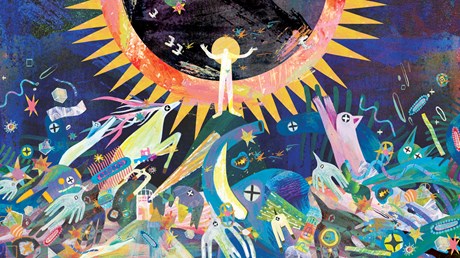Why Does Creation Groan?
Scripture and science suggest that animal suffering fits into a divine artistic story.

My Labrador retriever Buffy had a big heart. Our veterinarian, Beth, told us that Buffy had the largest, slowest “athlete’s heart” of any dog she had seen in 20 years of practice.
Buffy inherited her athletic heart from her grandmother, a dog that won numerous national field trial championships. In field trials, dogs must be eager, fast, and acutely alert to hand signals. They must also be able to keep going at full speed when most dogs begin to flag. That was Buffy. I never trained her for field trials, but we did retrieving drills almost every day with a bright orange “dummy.” Unlike Blue, her sister from another litter, Buffy never showed even the slightest sign that she was ready to stop retrieving. She just kept going.
The day before Buffy died at the age of 16, she was lying half awake on the living room floor and needed to go outside. Out of habit, I picked up the dummy. I was surprised when she abruptly perked up, struggled to her feet, shook once, and looked up at me expectantly. I could not believe that Buffy still wanted to retrieve.
Outside on the front lawn, I tossed the dummy a short distance. Buffy ambled after it, picked it up, and brought it back. Her eyes and ears said, Throw it again! So I did. She brought the dummy back, but this time she dropped it and, with a heavy breath, lay down. Buffy finally stopped retrieving.
Despite Buffy’s suffering in her old age, she lived a long and full life compared to many dogs. From the time they are born, dogs face dangers that can cut their lives short. They must be vaccinated for rabies and are besieged by hordes of micropredators, such as ticks, fleas, biting flies, mosquitoes—and the horrifying heartworm.
When a mosquito takes …